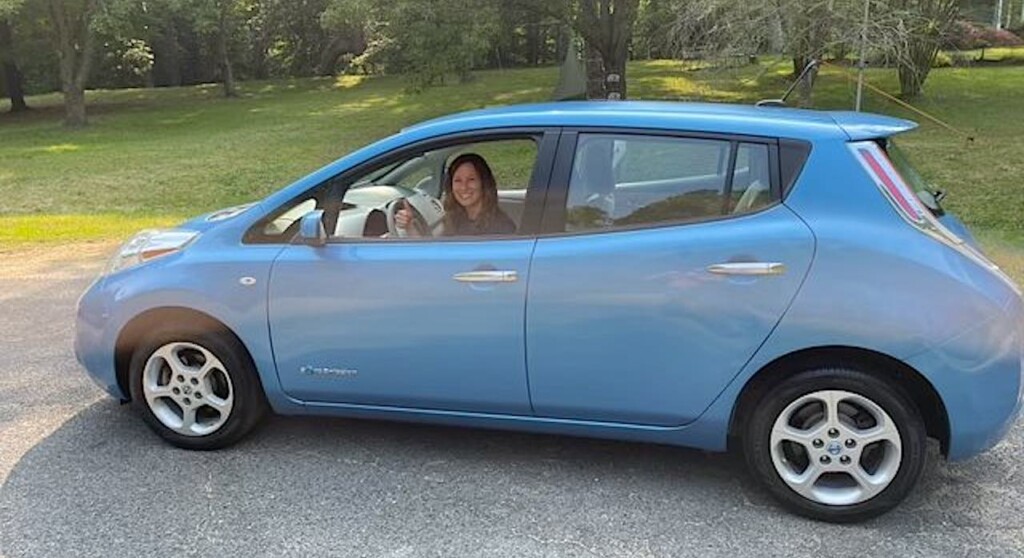Growing Up With Asthma, Woman Now Accelerates Our Transition to EVs to Reduce Air Pollution in Cities
Growing Up With Asthma, Woman Now Accelerates Our Transition ... Good News Network


Significant Development of the Brain Hindered by Air Pollution, Kate Hudson Promotes EVs as Solution

Introduction
During the crucial first two years of life, the brain undergoes significant development, with a staggering one million neural connections formed every second. However, air pollution around cities has emerged as a significant barrier to healthy brain development. Kate Harrison, recognizing this issue, has dedicated her life to promoting a solution.
Air Pollution and Urban Areas
In 2014, almost half of Americans lived in areas that fell short of federal air quality standards. Scientists have identified automobile exhaust as the main driver of urban air pollution since 1958. Transportation emissions also contribute the largest share of greenhouse gas emissions, which in turn contribute to climate change in the U.S.
The Solution: Electric Vehicles
Cities already have a solution to combat air pollution: engines powered by electricity. Electric vehicles (EVs) eliminate tailpipe emissions altogether.
Kate Hudson’s Personal Experience
Kate Hudson, who suffered from childhood asthma, grew up in New Haven, Connecticut, where almost 15% of kids have asthma—almost double the national average. She believes that reducing pollution in cities is a moral imperative, especially in minority communities that are located near highways and major traffic corridors.
MoveEV: Promoting EV Transition
Kate Hudson became a co-founder of MoveEV, an EV transition company that helps organizations convert their fleet and employee-owned gas vehicles to electric. MoveEV also provides reimbursements for charging at home.
Impact of Zero-Emission Vehicles
If all new cars, pickup trucks, and SUVs sold in the next decade were zero-emission vehicles, the United States could experience up to 89,300 fewer premature deaths, two million fewer asthma attacks, 10 million fewer lost workdays, and a savings of $978 billion in public health benefits by 2050, according to the American Lung Association.
Real-World Examples
Norway is often cited as a real-world example of how EV adoption can reduce air pollution. About 80% of new cars sold in Norway are fully electric, and another 10% are plug-in hybrids. The country is powered by an electricity grid that is already very green, with 91.8% hydropower and 6.4% wind power. As a result, emissions of dangerous particles have decreased by three-quarters from 2000 to 2020.
EV Adoption in Cities
Kate Hudson believes that cities should set an example for residents by transitioning their gasoline-powered fleet vehicles, such as trucks and buses, to EVs. Many cities and businesses have already started this transition. For example, Amazon currently has over 100,000 EV delivery vans on the road. New York City operates more than 4,000 government-owned EVs, including an electrified garbage truck fleet.
Supporting EV Adoption
Various initiatives are supporting the transition to EVs. Los Angeles, known for harmful tailpipe emissions, provides residents with over 1,100 public charging stations, free parking, and charging for EVs at some locations. Rebates are also available for residents who install home chargers. In some cities, EV drivers receive reduced bridge tolls.
The Vision of EV Adoption
Kate Hudson emphasizes that every parent deserves the assurance that their child’s environment is not silently eroding their potential. Data from places like Norway and California demonstrate the tangible reality of what is achievable. Embracing EV adoption is no longer a question of affordability but rather a question of necessity. With advances in EV technology, cities and counties have no excuse not to meet the imperative of embracing EV adoption. MoveEV can help them achieve this goal.
SDGs, Targets, and Indicators
1. Which SDGs are addressed or connected to the issues highlighted in the article?
- SDG 3: Good Health and Well-being
- SDG 7: Affordable and Clean Energy
- SDG 11: Sustainable Cities and Communities
- SDG 13: Climate Action
2. What specific targets under those SDGs can be identified based on the article’s content?
- SDG 3.9: By 2030, substantially reduce the number of deaths and illnesses from hazardous chemicals and air, water, and soil pollution and contamination.
- SDG 7.2: By 2030, increase substantially the share of renewable energy in the global energy mix.
- SDG 11.6: By 2030, reduce the adverse per capita environmental impact of cities, including by paying special attention to air quality and municipal and other waste management.
- SDG 13.2: Integrate climate change measures into national policies, strategies, and planning.
3. Are there any indicators mentioned or implied in the article that can be used to measure progress towards the identified targets?
- Number of premature deaths and asthma attacks
- Reduction in emergency room visits due to asthma
- Percentage of new cars sold that are zero-emission
- Reduction in emissions of dangerous particles
Table: SDGs, Targets, and Indicators
| SDGs | Targets | Indicators |
|---|---|---|
| SDG 3: Good Health and Well-being | SDG 3.9: By 2030, substantially reduce the number of deaths and illnesses from hazardous chemicals and air, water, and soil pollution and contamination. | – Number of premature deaths and asthma attacks – Reduction in emergency room visits due to asthma |
| SDG 7: Affordable and Clean Energy | SDG 7.2: By 2030, increase substantially the share of renewable energy in the global energy mix. | – Percentage of new cars sold that are zero-emission |
| SDG 11: Sustainable Cities and Communities | SDG 11.6: By 2030, reduce the adverse per capita environmental impact of cities, including by paying special attention to air quality and municipal and other waste management. | – Reduction in emissions of dangerous particles |
| SDG 13: Climate Action | SDG 13.2: Integrate climate change measures into national policies, strategies, and planning. | N/A |
Behold! This splendid article springs forth from the wellspring of knowledge, shaped by a wondrous proprietary AI technology that delved into a vast ocean of data, illuminating the path towards the Sustainable Development Goals. Remember that all rights are reserved by SDG Investors LLC, empowering us to champion progress together.
Source: goodnewsnetwork.org

Join us, as fellow seekers of change, on a transformative journey at https://sdgtalks.ai/welcome, where you can become a member and actively contribute to shaping a brighter future.







